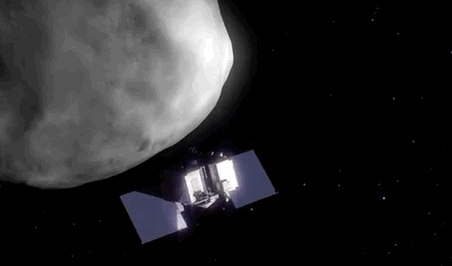CNSA - Tianwen-1 (天問-1) Mission to Mars logo.
July 23, 2022
Phobos seen by Tianwen-1
Phobos, the larger of the two natural satellites of Mars, was observed by the Tianwen-1 orbiter with its high resolution camera.
Phobos seen by Tianwen-1 (天問-1)
The image was released by the China National Space Administration (CNSA) to mark two years since the Tianwen-1 was launched. Tianwen-1 (天问一号) is China’s first Mars exploration mission with an orbiter, a lander and a rover named Zhurong (祝融).
Related articles:
Tianwen-1 orbiter completes planned scientific mission
https://orbiterchspacenews.blogspot.com/2022/06/tianwen-1-orbiter-completes-planned.html
The Tianwen-1 mission, Zhurong rover switches to dormant mode
https://orbiterchspacenews.blogspot.com/2022/05/the-tianwen-1-mission-zhurong-rover.html
Perseverance rover seen by Tianwen-1 orbiter
https://orbiterchspacenews.blogspot.com/2022/03/perseverance-rover-seen-by-tianwen-1.html
CNSA - Tianwen-1 orbiter deploys “selfie stick”
https://orbiterchspacenews.blogspot.com/2022/01/cnsa-tianwen-1-orbiter-deploys-selfie.html
New images from Tianwen-1 and Zhurong
https://orbiterchspacenews.blogspot.com/2022/01/new-images-from-tianwen-1-and-zhurong.html
China’s Mars rover has amassed reams of novel geological data
https://orbiterchspacenews.blogspot.com/2021/11/chinas-mars-rover-has-amassed-reams-of.html
Tianwen-1 orbiter enters into its science orbit
https://orbiterchspacenews.blogspot.com/2021/11/tianwen-1-orbiter-enters-into-its.html
Zhurong's first weather report from Mars & Tianwen-1 orbiter delays move into science orbit
https://orbiterchspacenews.blogspot.com/2021/08/zhurongs-first-weather-report-from-mars.html
Zhurong completes its designed mission
https://orbiterchspacenews.blogspot.com/2021/08/zhurong-completes-its-designed-mission.html
Tianwen-1 and Zhurong – a new phase of Mars exploration
https://orbiterchspacenews.blogspot.com/2021/08/tianwen-1-and-zhurong-new-phase-of-mars.html
Tianwen-1 Mission to Mars - Close-Up of Zhurong’s Parachute
https://orbiterchspacenews.blogspot.com/2021/07/tianwen-1-mission-to-mars-close-up-of.html
Tianwen-1 Mission to Mars - New images from Zhurong
https://orbiterchspacenews.blogspot.com/2021/07/tianwen-1-mission-to-mars-new-images.html
Zhurong landing on Mars & Sounds of Zhurong’s descend onto Mars
https://orbiterchspacenews.blogspot.com/2021/06/zhurong-landing-on-mars-sounds-of.html
Zhurong rover and Tianwen-1 lander on Mars
https://orbiterchspacenews.blogspot.com/2021/06/zhurong-rover-and-tianwen-1-lander-on.html
Tianwen-1 Lander and Zhurong Rover seen by NASA’s Mars Reconnaissance Orbiter
https://orbiterchspacenews.blogspot.com/2021/06/tianwen-1-lander-and-zhurong-rover-seen.html
Zhurong is roving on Mars!
https://orbiterchspacenews.blogspot.com/2021/05/zhurong-is-roving-on-mars.html
Why the China Mars rover’s landing site has geologists excited & Zhurong’s first images from Mars
https://orbiterchspacenews.blogspot.com/2021/05/why-china-mars-rovers-landing-site-has.html
Tianwen-1 orbiter relays Zhurong rover’s data and images
https://orbiterchspacenews.blogspot.com/2021/05/tianwen-1-orbiter-relays-zhurong-rovers.html
Zhurong landed on Mars! The Tianwen-1 rover is on Utopia Planitia (Videos)
https://orbiterchspacenews.blogspot.com/2021/05/zhurong-landed-on-mars-tianwen-1-rover.html
China succeeds in landing its rover on Mars
https://orbiterchspacenews.blogspot.com/2021/05/china-succeeds-in-landing-its-rover-on.html
Related link:
For more information about China National Space Administration (CNSA), visit: http://www.cnsa.gov.cn/
Image, Video, Text, Credits: China National Space Administration (CNSA)China Central Television (CCTV)/SciNews/Orbiter.ch Aerospace/Roland Berga.
Best regards, Orbiter.ch















































